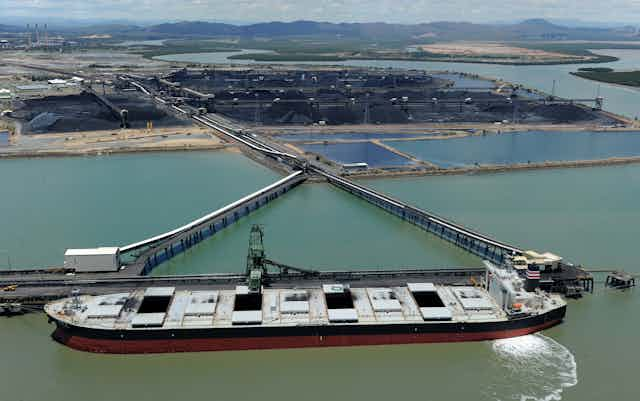If the Abbot Point expansion is approved by the Commonwealth Environment Minister next month, port dredging will go ahead. Private investment in coal ports and rail may no longer stack up, as BHP Billiton confirmed last week. But the government-owned North Queensland Bulk Ports Corporation will start dredging regardless. As Sir Joh Bjelke Petersen used to say “just you wait and see”.
The Queensland government buys the industry view that coal export growth momentum will continue. In their world, dredging first and asking questions later is one way to bring mine and rail projects “one step closer to financial close”.
Providing royalty discounts as a carrot for investors is another. On paper at least, this creates new jobs and royalties. Anyone who knows how Queensland industry and government really work will tell you that.
Yet the rest of the world is increasingly worried about coal. China is worried about the health costs of smog. The big miners are worried permanent structural changes, such as new supply from cheaper overseas competitors, have long-term implications for the value of Australian assets. Investment banks are worried about high-cost mines becoming stranded assets in the next decade. No, it’s not just the greenies anymore.
So should Queenslanders be worried too?
The trends aren’t looking good. China now plans to cap thermal coal use by 2015, a marked shift from doubling thermal coal consumption in the last decade. Goldman Sachs predicts seaborne trade to grow at only 1% for the next few years, compared to an annual 7% over the five years to 2012. Previous prices of US$120 a tonne now look like a blip on the radar, with the World Bank forecasting prices closer to US$70 a tonne out to 2020.
“Don’t you worry about that”, as Sir Joh Bjelke-Petersen would say. Queensland is well placed to maintain revenues and royalties through increased production. Even if the cost per tonne is down, more tonnes still equals more money.
Yet soft prices may not be made good through higher volumes. A boom in demand has become a boom in global supply. As Glencore’s CEO explains it miners have “screwed up” in contributing to a global supply glut.
Queensland may be priced out of the market, even if global thermal coal trade demand remains strong. Australia’s thermal coal production shifted from the competitive lower half of the global cost curve firmly into the upper half between 2006 and 2012.
This reflects a mining productivity slowdown since the mid-1980s, driven by capital investment in lower quality deposits that cost more to dig up. Unlike soaring capital costs and labour scarcity also caused by the mining investment boom, the costs of lower quality deposits are here to stay.
At this point in the commodity cycle, surplus infrastructure is likely to hinder rather than help industry competitiveness. For example, only half the capacity of the new Wiggins Island Coal Export Terminal Stage 1 is likely to be used when it opens in the Port of Gladstone next year. Yet the consortium of miners who invested in it will still have to pay for the full amount. In the long run, such assets may be stranded if there is more port capacity available than mines to utilise it.
“Goodness gracious, I know what you’re trying to do”, I hear Sir Joh say. In the same vein, the Queensland Resources Council (QRC) this week clearly expressed their view that extra capacity is important to avoid the risk of shortages of port capacity. They also suggested recent monthly data, if annualised, shows port utilisation is on the rise.
Not all that data is publicly available, and extrapolating future annual figures from one or two recent months is brave. But the industry peak body should be looking to the future. That’s part of their job.
What they shouldn’t do is misrepresent the facts. The QRC claim government data showing average port utilisation rates of 65% over the past three years isn’t representative, because flood-affected mines operated below capacity for some of this time. Yet utilisation for Queensland coal ports has been below the Australian industry average of 85% for longer than that.
Adjusting for the timing of port expansions and looking at years ending June, utilisation was 66% in 2009 and 75% in 2010 (before the floods), compared to 63% in 2011 and 61% in 2012 (after the floods).
Publicly available data for 2013 puts utilisation at 62% (excluding Port of Brisbane and Dalrymple Bay Coal Terminal, which are privately owned). This is consistent with Queensland Government findings on port utilisation.
Campbell Newman says investment in ports is now a private decision, to be made on commercial grounds. Yet his government reserves the right to develop ports if the private sector is too slow.
Encouraging private investment by dredging before port investments are confirmed risks environmental damage for what may turn out to be no good reason. If more development leads to stranded assets, job cuts and budget shortfalls will be a problem for the government not just the private sector.
“Let me tell you, what’s good for Queensland is good for Australia”, Sir Joh used to say.
But for how long?

